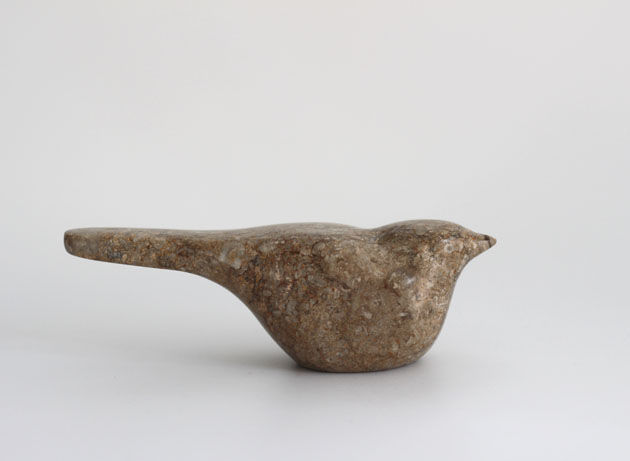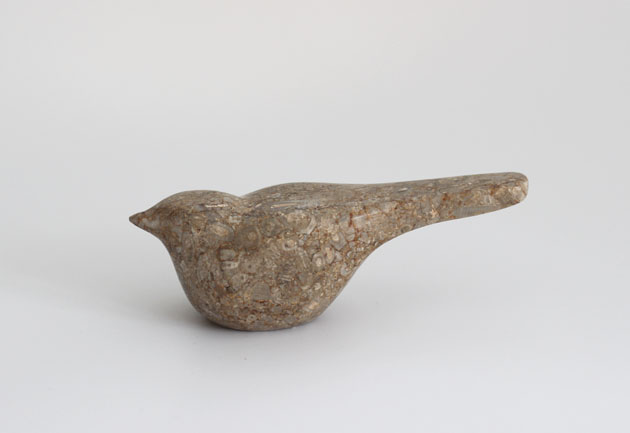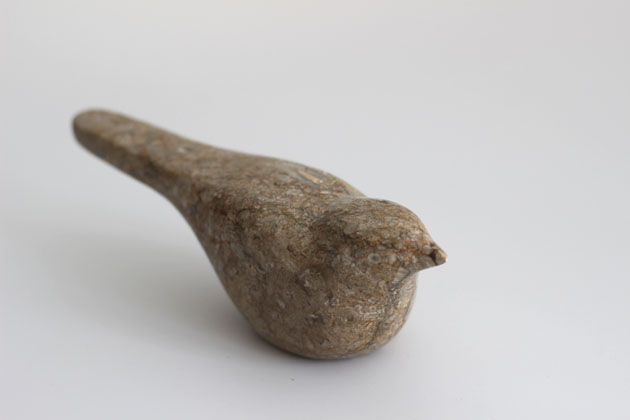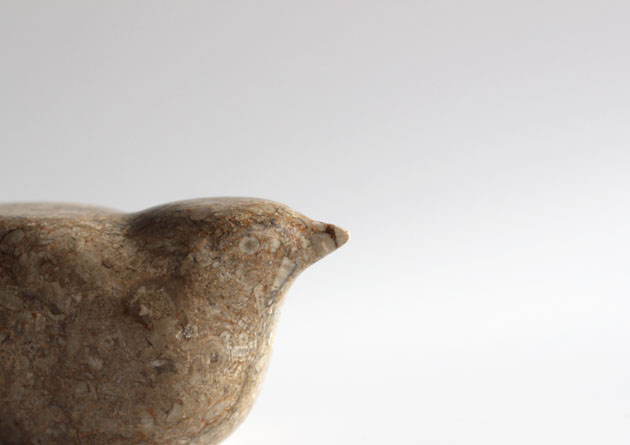Fossily Bird

Fossily Bird sculpture is carved in Swaledale Fossil limestone. The stone contains an abundance of fossils and fossil traces which are really brought out clearly when the stone is polished.
As might be expected Swaledale Fossil comes from Swaledale, a North Yorkshire dale on the River Swale. It is a typical limestone valley, the glacier formed vale is narrow at the bottom, sided by meadows and fell-side fields rising to moorland and craggy rock outcrops.

In the 13th century the stone was used in Durham Cathedral and as pavements for York Minster in the 15th century. The stone then became rather unfashionable, perhaps because it is very dense and difficult to work. Its decorative qualities were in vogue again in the 1800 and 1900’s when it reappeared to embellish houses of distinction and large estates.

Beautiful though it is on floor and in tile, maybe it is time to elevate Swaledale Fossil to shelf, mantle, table or display cabinet – moreover to be held in the hand, to be handled, admired close-to, be part of a collection. Rather than walked on I think this stone needs to be seen and appreciated at eye level, at heart level.

Incidentally, the little pale coloured circle, which might be representative of an eye for Fossily Bird, is a fossilised crinoid, or at least a fragment of one. Crinoids are marine animals that attach themselves to the sea bottom by a stalk and then have feathery feeding arms which wave around catching plankton. Swaledale Fossil is almost entirely made up of them, its story dramatically told by the stunning shapes of creatures that lived millions of years ago.
See also Vase in Swaledale Fossil
